 RBGE staff recently returned from Kathmandu where they had met with colleagues from the Government of Nepal’s Department of Plant Resources in celebration of the historic 200-year relationship between our two countries. Staff from the two gardens undertook a commemorative joint botanical expedition exploring the high Himalayan mountains, returning for the inauguration of the new Biodiversity Education Garden by the Rt. Hon. President of Nepal, Mrs Bidhya Devi Bhandari.
RBGE staff recently returned from Kathmandu where they had met with colleagues from the Government of Nepal’s Department of Plant Resources in celebration of the historic 200-year relationship between our two countries. Staff from the two gardens undertook a commemorative joint botanical expedition exploring the high Himalayan mountains, returning for the inauguration of the new Biodiversity Education Garden by the Rt. Hon. President of Nepal, Mrs Bidhya Devi Bhandari.
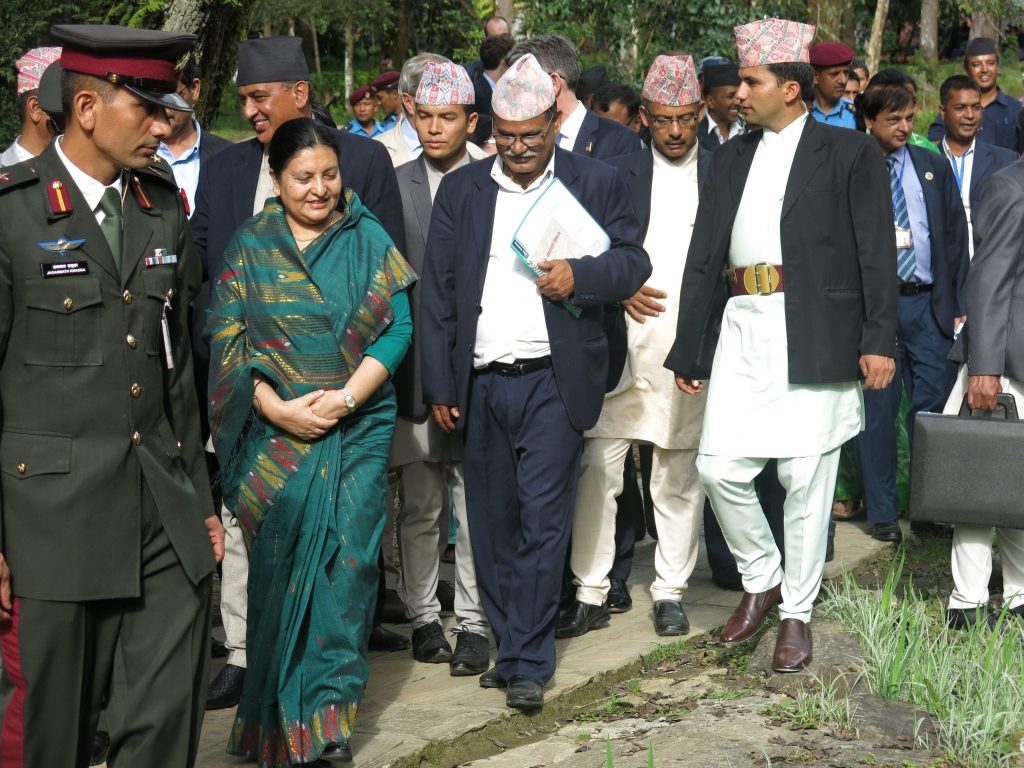 The Biodiversity Education Garden (BEG) is a stunning visitor attraction and educational resource sited within the National Botanical Garden, Godavari. Aimed at the 70,000 school children and students who visit the National Botanic Garden (NBG) each year, this garden has been created to inspire and educate the next generation of Nepalese people to understand, value and conserve plants.
The Biodiversity Education Garden (BEG) is a stunning visitor attraction and educational resource sited within the National Botanical Garden, Godavari. Aimed at the 70,000 school children and students who visit the National Botanic Garden (NBG) each year, this garden has been created to inspire and educate the next generation of Nepalese people to understand, value and conserve plants.
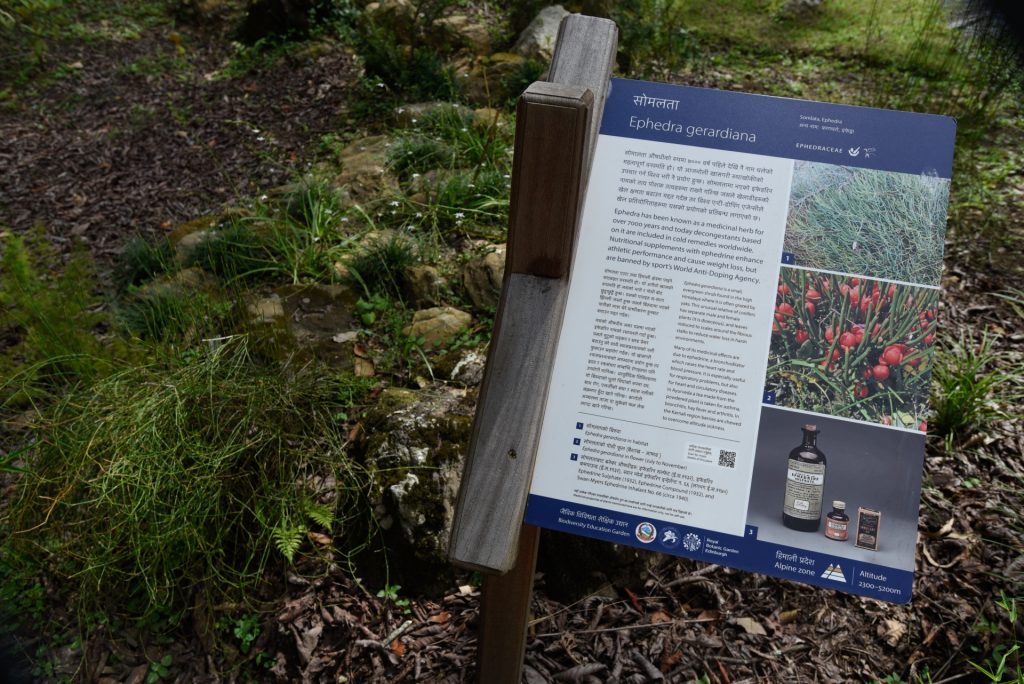 RBGE worked with NBG to create this remarkable garden and establish a world-class showpiece for Nepalese plants. The BEG immerses visitors in a carefully selected collection of Nepal’s plants arranged in the three major ecological zones – tropical, temperate and alpine. Bilingual, richly illustrated information panels explain the economic and cultural importance of plants to people’s everyday lives, convey information on the effects of climate change, habitat degradation and unsustainable harvesting, and promote the safeguarding of these resources for the future. The BEG has already captured the imagination of visitors of all ages, with people enjoying exploring this new area before they go on their journey to other parts of the garden.
RBGE worked with NBG to create this remarkable garden and establish a world-class showpiece for Nepalese plants. The BEG immerses visitors in a carefully selected collection of Nepal’s plants arranged in the three major ecological zones – tropical, temperate and alpine. Bilingual, richly illustrated information panels explain the economic and cultural importance of plants to people’s everyday lives, convey information on the effects of climate change, habitat degradation and unsustainable harvesting, and promote the safeguarding of these resources for the future. The BEG has already captured the imagination of visitors of all ages, with people enjoying exploring this new area before they go on their journey to other parts of the garden.
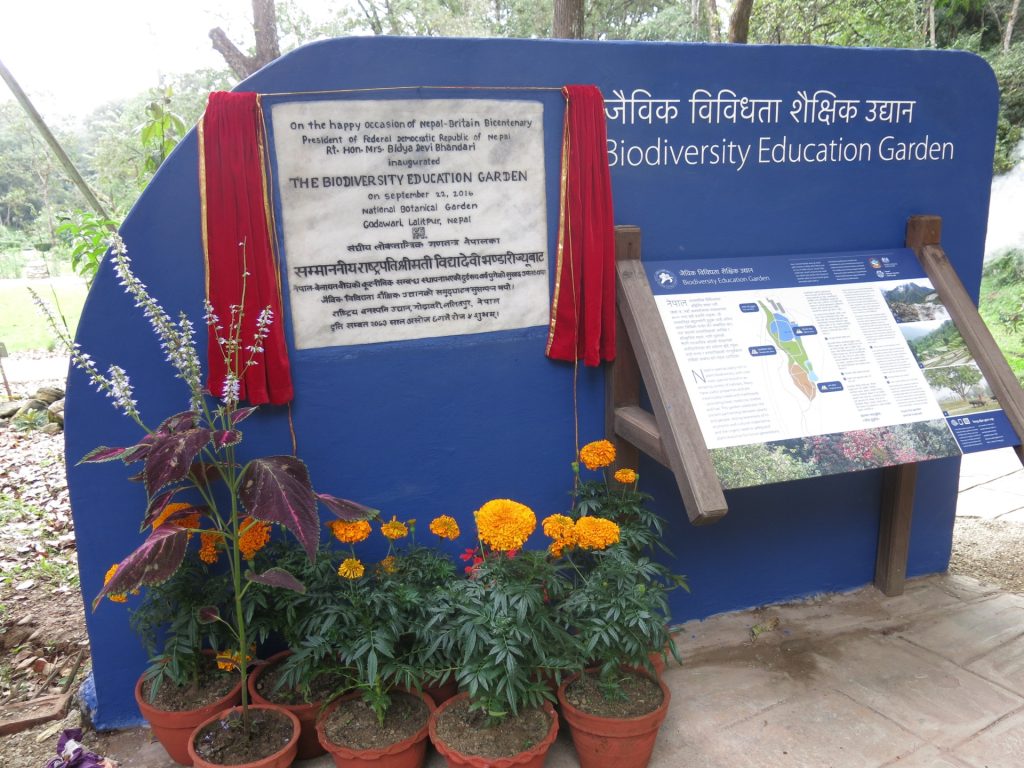 Funded by the British Embassy in Kathmandu, with significant contributions from Nepal’s Ministry of Forests and Soil Conservation, the BEG will be a lasting commemoration of the bicentenary celebrations of the Britain-Nepal bilateral relationship, which began in March 1816. Despite major challenges resulting from the ‘Great Quakes’ of April and May 2015, the protracted fuel crisis, and long delays in the removal of dangerous trees, the BEG was opened to the public on 12 March 2016 to the delight of the staff and local visitors. In just 12 weeks a neglected area of boggy grass, with a mix of broken stumps and mature trees in varying states of health, was transformed into a pathed, planted, labelled and interpreted garden of an international standard not previously seen in Nepal.
Funded by the British Embassy in Kathmandu, with significant contributions from Nepal’s Ministry of Forests and Soil Conservation, the BEG will be a lasting commemoration of the bicentenary celebrations of the Britain-Nepal bilateral relationship, which began in March 1816. Despite major challenges resulting from the ‘Great Quakes’ of April and May 2015, the protracted fuel crisis, and long delays in the removal of dangerous trees, the BEG was opened to the public on 12 March 2016 to the delight of the staff and local visitors. In just 12 weeks a neglected area of boggy grass, with a mix of broken stumps and mature trees in varying states of health, was transformed into a pathed, planted, labelled and interpreted garden of an international standard not previously seen in Nepal.
The BEG was formally inaugurated by the Rt. Hon. President of Nepal on 22nd September, with the Hon. Minister of Forest and Soil Conservation, Mr Shankar Bhandari, the Hon. Minister of Culture, Tourism and Culture, Mr Jeeban Bahadur Shahi, and HE British Ambassador to Nepal, Mr Richard Morris.
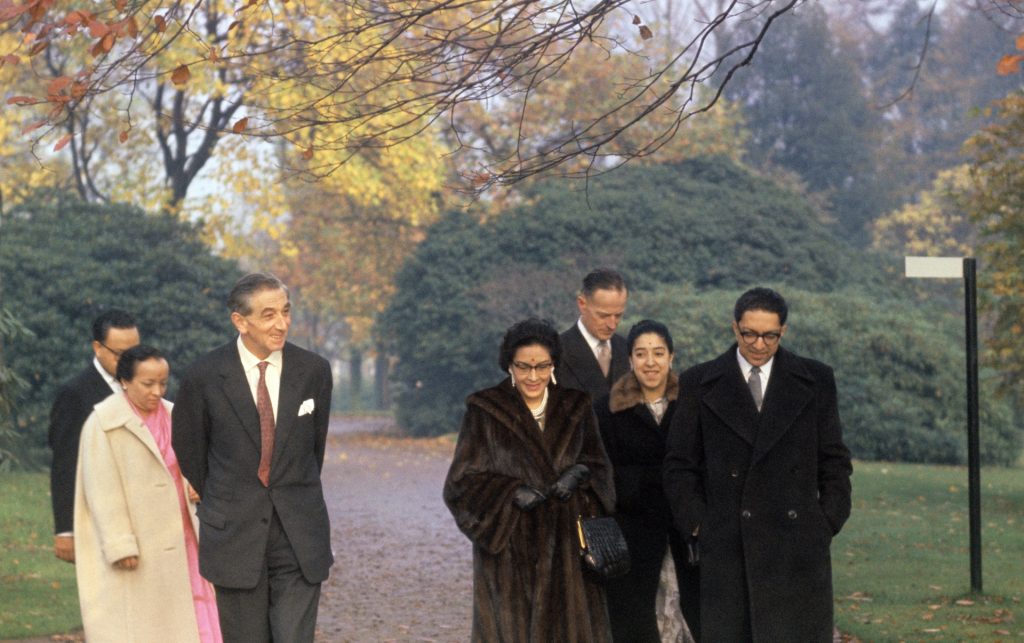 Our botanical connections with Nepal extend back beyond 200 years, to 1802, when RBGE-trained Francis Buchanan-Hamilton made the first scientific collections of plants from the Kathmandu Valley. It is therefore fitting that the Britain-Nepal Bicentenary is being celebrated with the creation of a garden, and that it includes plants that were first documented by Buchanan-Hamilton. In 1960 King Mahendra visited RBGE during his state visit to Britain. He was so impressed that he established his own garden in Nepal in 1962 – what is now the National Botanical Garden. British horticulturists Geoffrey Herklots and Tony Schilling helped create the garden in Godavari, and now RBGE is working with NBG to continue this Anglo-Nepalese horticultural link.
Our botanical connections with Nepal extend back beyond 200 years, to 1802, when RBGE-trained Francis Buchanan-Hamilton made the first scientific collections of plants from the Kathmandu Valley. It is therefore fitting that the Britain-Nepal Bicentenary is being celebrated with the creation of a garden, and that it includes plants that were first documented by Buchanan-Hamilton. In 1960 King Mahendra visited RBGE during his state visit to Britain. He was so impressed that he established his own garden in Nepal in 1962 – what is now the National Botanical Garden. British horticulturists Geoffrey Herklots and Tony Schilling helped create the garden in Godavari, and now RBGE is working with NBG to continue this Anglo-Nepalese horticultural link.
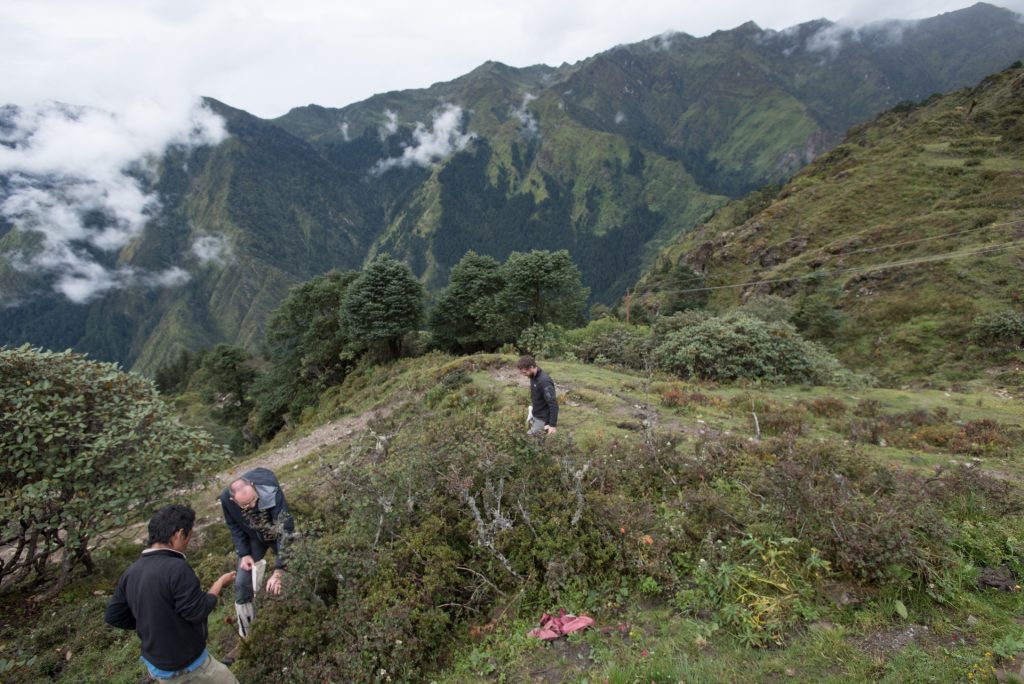 Before the official opening, six members of staff from RBGE and two from DPR undertook an arduous botanical expedition into the mountains of Rasuwa district, central Nepal. This Bicentenary Expedition was the first joint expedition by the two gardens, and the first to include RBGE’s Regius Keeper, Simon Milne. The expedition was aimed at improving the botanical knowledge of this region, and also develop NGB’s capacity for scientific fieldwork, plant collection and cultivation. Despite the late monsoon, with very wet weather and numerous leeches , the expedition was a great success, and over 300 seed accessions were collected together with herbarium voucher specimens. Some of the seeds have already being sown and will extend the range of plants displayed in the BEG, and other parts of the National Botanical Garden. The rest are being used to start a new seed bank of wild plants in Nepal. RBGE was given permission to bring a share of the seed back to Edinburgh to grow plants for the new Nepal display area at Inverleith and for research and educational purposes.
Before the official opening, six members of staff from RBGE and two from DPR undertook an arduous botanical expedition into the mountains of Rasuwa district, central Nepal. This Bicentenary Expedition was the first joint expedition by the two gardens, and the first to include RBGE’s Regius Keeper, Simon Milne. The expedition was aimed at improving the botanical knowledge of this region, and also develop NGB’s capacity for scientific fieldwork, plant collection and cultivation. Despite the late monsoon, with very wet weather and numerous leeches , the expedition was a great success, and over 300 seed accessions were collected together with herbarium voucher specimens. Some of the seeds have already being sown and will extend the range of plants displayed in the BEG, and other parts of the National Botanical Garden. The rest are being used to start a new seed bank of wild plants in Nepal. RBGE was given permission to bring a share of the seed back to Edinburgh to grow plants for the new Nepal display area at Inverleith and for research and educational purposes.
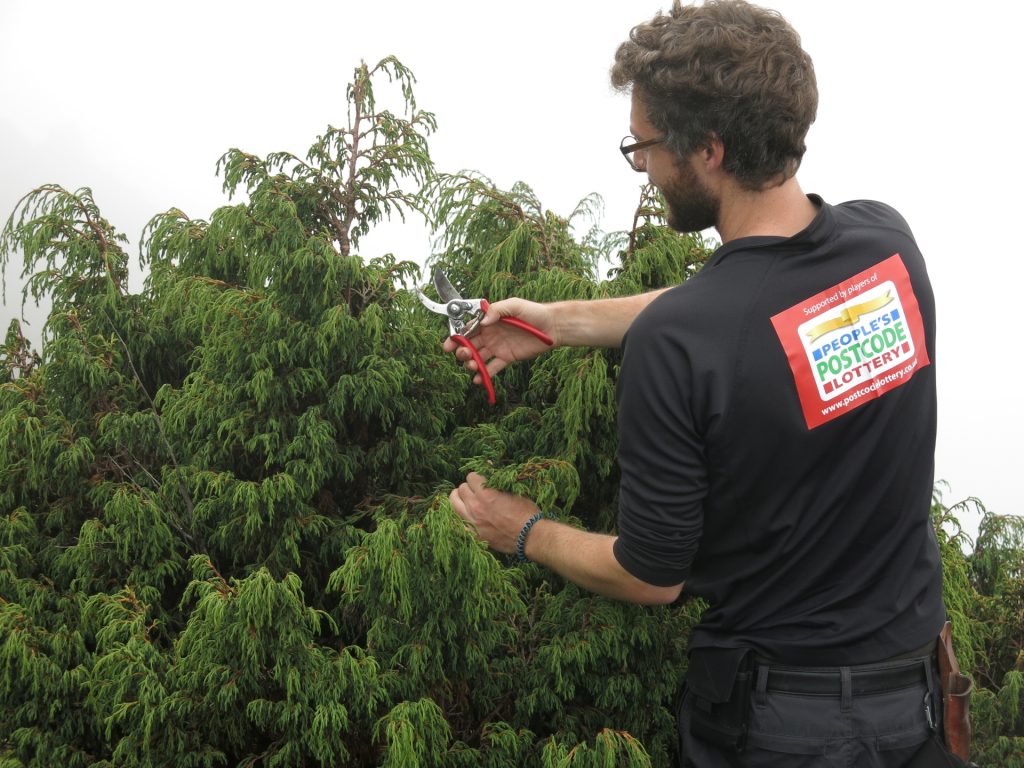 DPR has been working with RBGE on the Flora of Nepal for over 15 years, and the collaboration between the two gardens was formalised in 2015 with the signing of an MOU. BEG and the Bicentenary Expedition are the first of many projects where we will work together to build capacity, share expertise and help to develop NBG into a world-class visitor attraction and as an educational resource to raise awareness of the importance of biodiversity and the needs for conservation and sustainable use of Nepal’s natural resources.
DPR has been working with RBGE on the Flora of Nepal for over 15 years, and the collaboration between the two gardens was formalised in 2015 with the signing of an MOU. BEG and the Bicentenary Expedition are the first of many projects where we will work together to build capacity, share expertise and help to develop NBG into a world-class visitor attraction and as an educational resource to raise awareness of the importance of biodiversity and the needs for conservation and sustainable use of Nepal’s natural resources.
The Flora of Nepal botanical art exhibition is still running at RBGE and Nepal features prominently in this year’s Botanics Lights.

Gina Douglas
Good to see the link with the past, the collaboration on the National Botanic Garden and the continuing RBGE involvement all featuring.